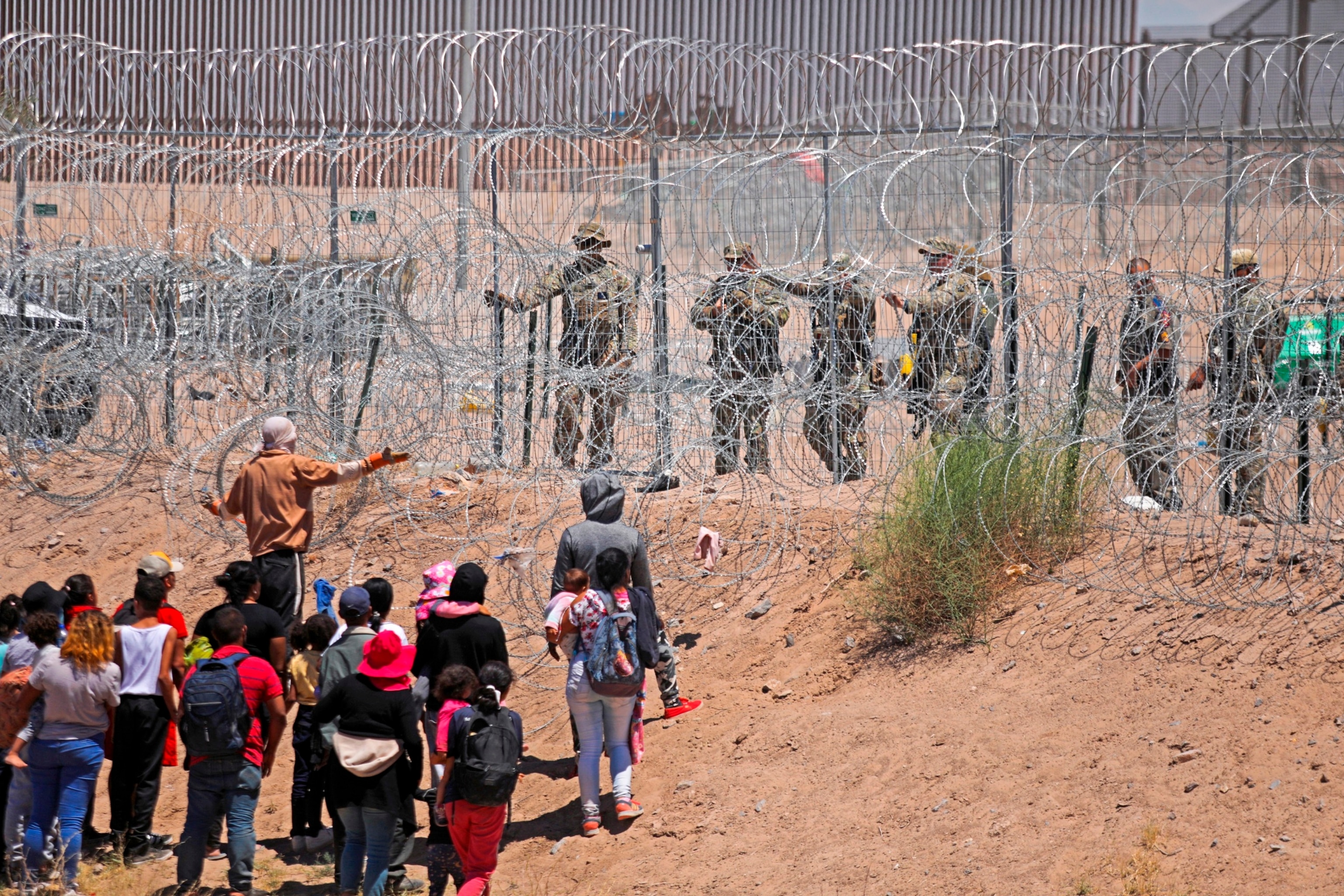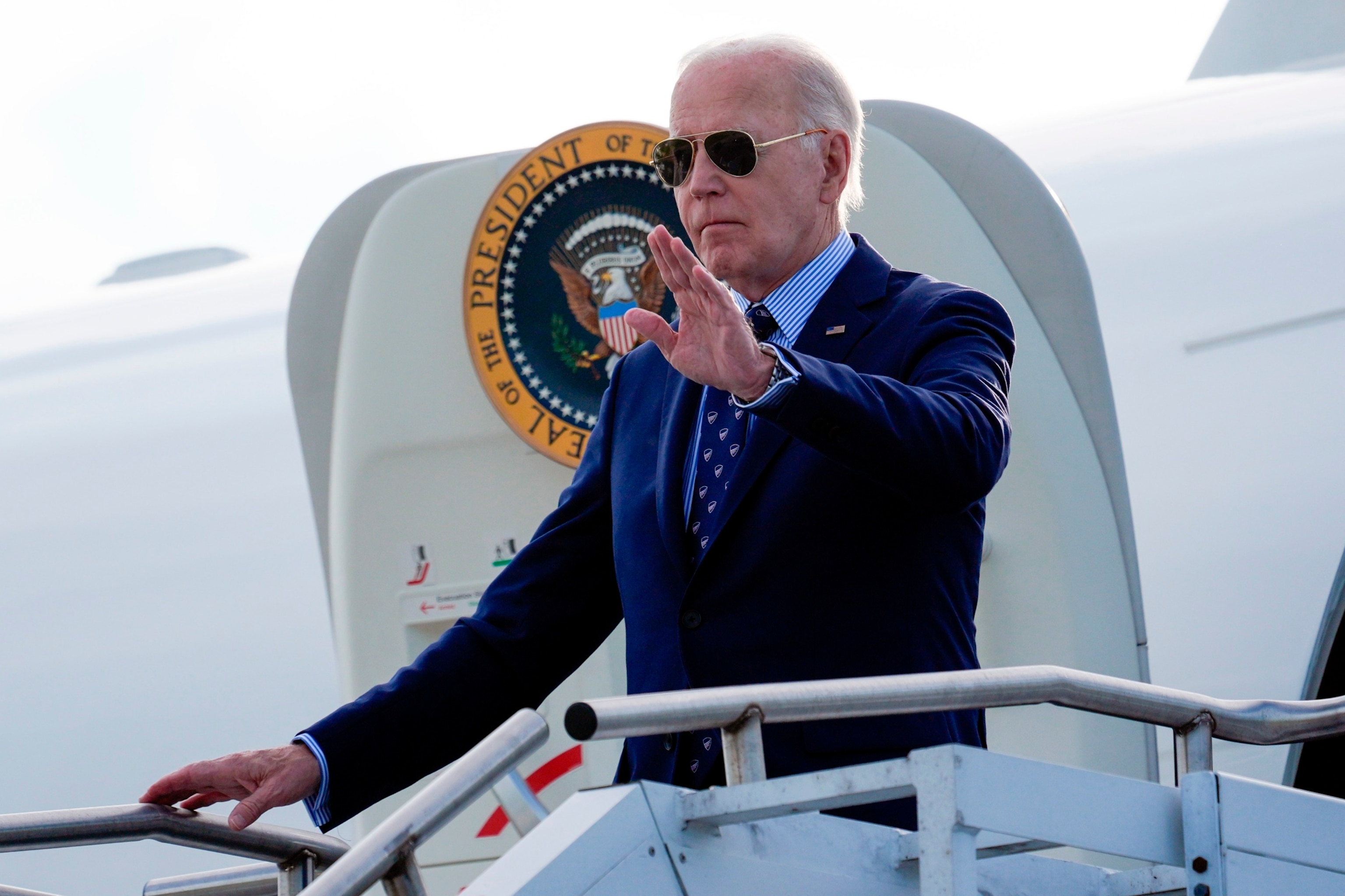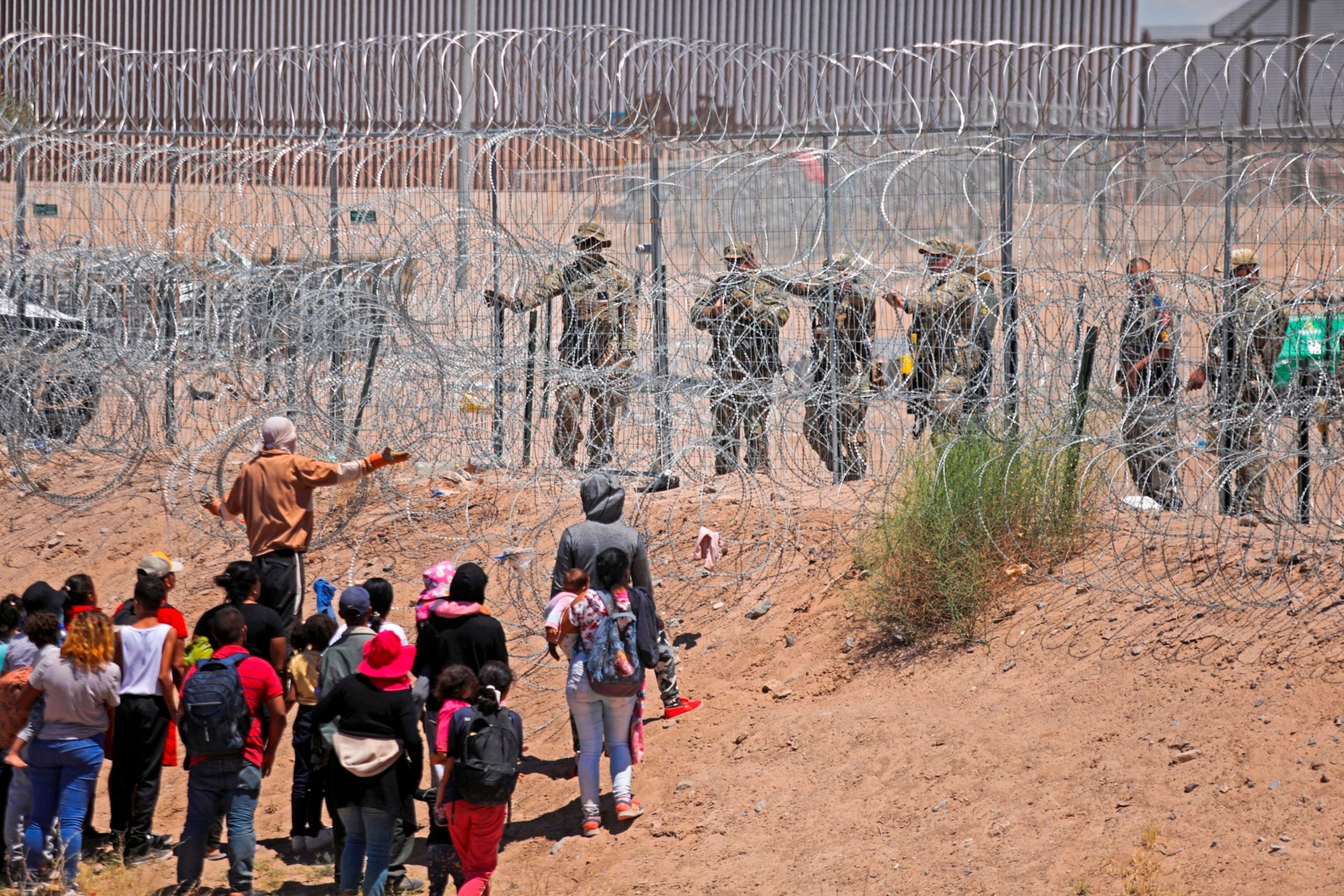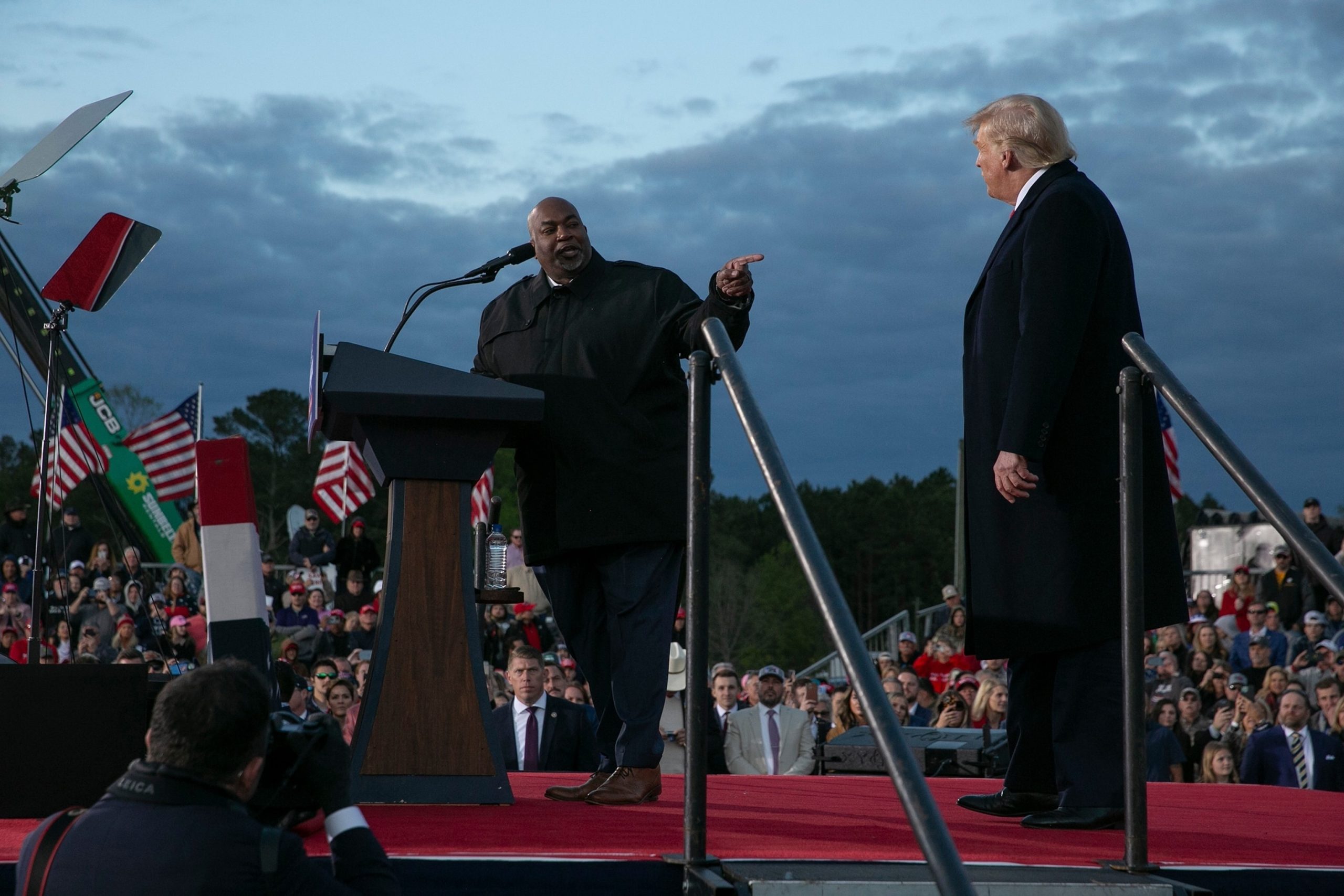President Joe Biden is expected to take executive action Tuesday that would limit the number of migrants who can claim asylum between ports of entry at the southern U.S. border.
Biden administration officials recently told reporters on a call that the executive action would do what Congress couldn’t: provide substantive immigration reform.
“The administration is taking decisive action designed to strengthen the security of our southern border and reduce unlawful migration by suspending the entry of individuals across the southern border,” a Biden administration official said.
Here’s what to know about Biden’s executive action on immigration:
The executive action would establish a rule that would turn away migrants who are claiming asylum between ports of entry after there have been seven consecutive days of more than 2,500 encounters along the southern border.
The United States would start accepting migrants who are claiming asylum only if there have been 14 days of encounters at 1,500 migrants or less, according to administration officials.
The rule would take effect later Tuesday, according to officials.
Migrants would still be able to use the CBP One app to make appointments at the border, meaning they would still be able to claim asylum. The action applies to “unscheduled” apprehensions at the border, officials said.

Migrants seeking to enter the United States through a barbed wire fence installed along the Rio Grande are driven away with pepper spray shots by Texas National Guard agents at the border with Ciudad Juarez, Chihuahua State, Mexico, on May 13, 2024.
Herika Martinez/AFP via Getty Images, FILE
“The suspension and limitation on entry and the rule will not apply to individuals who use a safe and orderly process, such as the CBP [Customs and Border Protection] One mobile application to enter the United States at a port of entry in an orderly manner,” an official said.
CBP doesn’t provide real-time data on border crossings, but there were 3,600 apprehensions along the southern border on Sunday alone — well past the threshold Biden has set to shut down all asylum claims between ports of entry, according to a source familiar with the data. Border Patrol is seeing an average of 3,500 apprehensions per day in recent weeks, according to another source — also past the new threshold.
The rule would apply to and expel “immediately” any individual who is encountered along the southern border if the provision of limiting asylum at the border has been triggered, according to officials.
The migrant’s country of origin doesn’t matter, officials said, and individuals would be removed to their country of origin in a matter of “days, if not hours,” under the new executive rule.
Administration officials said the measures would “significantly speed up” the current process for individuals who do not manifest a credible fear, which is the threshold for establishing an asylum claim in the United States.
“We have seen consistently over the last few years that when we have the ability to remove individuals quickly, it can significantly impact migratory flows by changing the calculus for intending migrants, especially if they know that they are going to be removed quickly and not be able to remain in the United States for many years through their immigration court process,” an official said. “They’re going to be much less likely to pay the thousands of dollars that it’s required to the smuggling networks that more or less control access to the routes leading up to our border.”

President Joe Biden waves as he arrives on Air Force One at Westchester County Airport in White Plains, N.Y., June 3, 2024.
Alex Brandon/AP
There is, however, an exception for children who are crossing the border as unaccompanied minors, officials said.
The 2,500 number was picked because that’s the number negotiated in the bipartisan border bill, officials said.
Related Stories
Officials said these steps will do what the border bill was intended to do: strengthen the immigration system.
“The president worked with [a] bipartisan group of senators to reach a historic border security agreement, an agreement that would have delivered significant policy changes, resources and personnel necessary to secure our border and make our country safer, and that would have made the asylum process fairer and more efficient while ensuring protection for the most vulnerable,” an administration official said, placing the blame squarely on Congressional Republicans.
Earlier this year, Senate Democrats and Republicans negotiated a bipartisan border bill that was effectively killed in the House at the behest of former President Donald Trump.
“The American people told us what they want,” the official said. “They want a secure border.”
Officials also pushed back on the notion that the rule is similar to that of former President Trump’s, which was broad and targeted people based on other factors such as their religion.
Administration officials said they have made changes to the executive rule that they believe would hold up in court.
The Department of Justice will be prepared to defend any litigation should it arise.
“DOJ defends lawsuits, rules and actions on a regular basis, and we are prepared for litigation on this rule,” the official said. “I think we are accustomed to being litigated frequently from both sides of a political spectrum for just about any measure we take in this space.”
Chad Wolf, a Republican and former acting secretary of Homeland Security in the Trump administration, said that, from his perspective, the executive action won’t make a dent in the “asylum abuse” that is being carried out along the border.
“There are holes in this plan,” Wolf told “Fox & Friends” on Tuesday morning. “This plan does nothing to stop the asylum abuse, does nothing to stop the parole abuse that this administration has done, nothing to stop catch and release. I see a lot of different holes here. I don’t think it’s going to work. I think it is too little too late.”
ABC News’ Quinn Owen and Justin Fishel contributed to this report.
President Joe Biden has wasted no time in addressing the issue of immigration since taking office, signing a series of executive orders aimed at reversing some of the policies put in place by his predecessor, Donald Trump. One of the most significant actions taken by President Biden is the creation of a task force to reunite families who were separated at the border under the Trump administration’s “zero tolerance” policy.
The task force, led by the Secretary of Homeland Security, will work to identify and reunite families who were separated at the border between January 20, 2017, and January 20, 2021. This includes families who were separated as a result of the “zero tolerance” policy as well as those who were separated for other reasons. The task force will also work to provide support services to these families, including mental health services and legal assistance.
In addition to the task force, President Biden has also taken steps to address the root causes of migration from Central America. He has ordered a review of the Trump administration’s agreements with El Salvador, Guatemala, and Honduras, which aimed to prevent migrants from seeking asylum in the United States. President Biden has also directed the State Department to work with these countries to address the underlying issues that drive migration, such as poverty, violence, and corruption.
Furthermore, President Biden has ordered a review of the Trump administration’s “Remain in Mexico” policy, which required asylum seekers to wait in Mexico while their cases were processed in the United States. This policy has been widely criticized for putting asylum seekers at risk of violence and exploitation in Mexico. President Biden has also ordered a review of the Trump administration’s restrictions on asylum eligibility, which made it more difficult for migrants to qualify for asylum in the United States.
Overall, President Biden’s executive actions on immigration represent a significant shift from the policies of the previous administration. By creating a task force to reunite separated families, addressing the root causes of migration, and reviewing harmful policies such as “Remain in Mexico” and asylum restrictions, President Biden is signaling a more compassionate and humane approach to immigration policy. It remains to be seen how these actions will be implemented and what impact they will have on the immigration system as a whole, but they represent a step in the right direction towards a more just and fair immigration system.



